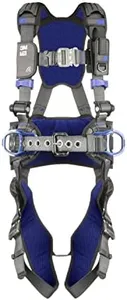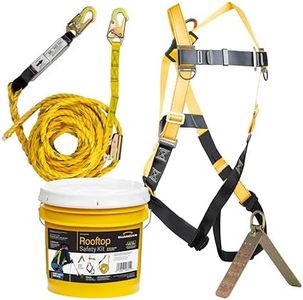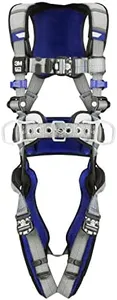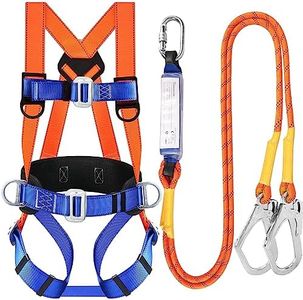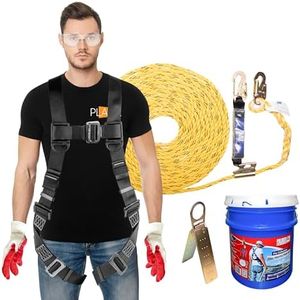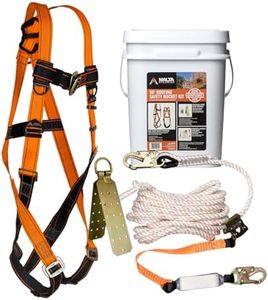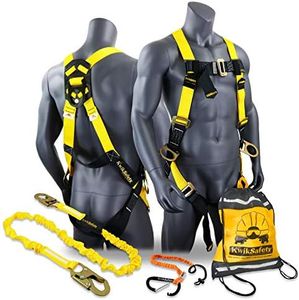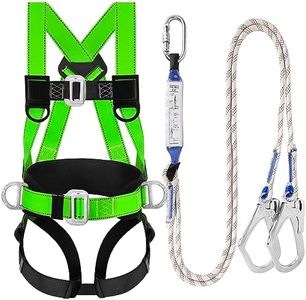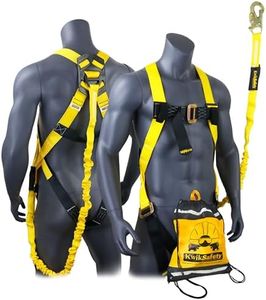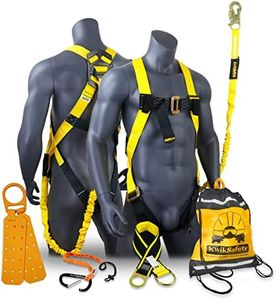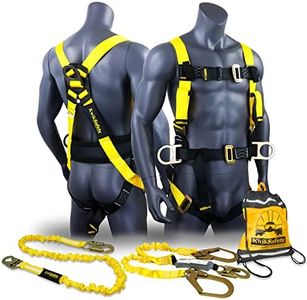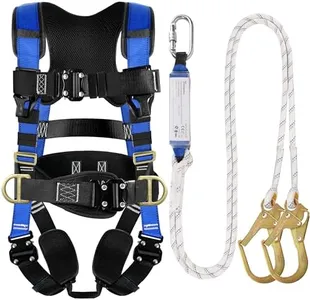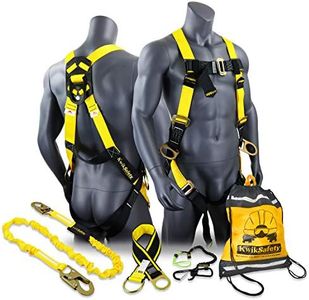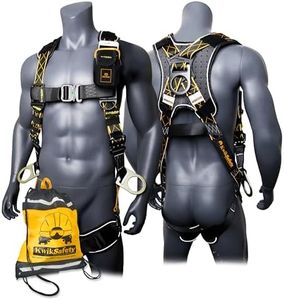We Use CookiesWe use cookies to enhance the security, performance,
functionality and for analytical and promotional activities. By continuing to browse this site you
are agreeing to our privacy policy
10 Best Safety Harness For Roofers
From leading brands and best sellers available on the web.Buying Guide for the Best Safety Harness For Roofers
Choosing the right safety harness for roofing work is essential to keeping yourself safe and comfortable while working at heights. A harness is a crucial component of a fall arrest system, and picking the right one ensures both your security and your ability to move efficiently. When selecting a harness, think about the type of roofing jobs you do, how long you’ll wear the harness, and the kind of environment you’ll be working in. Focusing on key features and understanding their purpose will help you make a smart, safe choice.Harness TypeThe type of safety harness refers to its design and intended use, such as full-body, sit harness, or chest harness. For roofers, a full-body harness is the standard because it distributes the impact of a fall over your thighs, pelvis, chest, and shoulders. Some harnesses are designed for specific types of work, such as those that include padding or special attachments. Decide what level of mobility, comfort, and protection you need for your usual tasks: for most roofing work, a standard full-body harness is best, but if you spend long hours on the roof, extra padding and comfort features might be important.
Attachment Points (D-Rings)Attachment points, often called D-rings, are the places where you connect your lanyard, lifeline, or other safety gear. The most common is the back dorsal D-ring, used for general fall arrest. Some harnesses also include front D-rings for climbing or positioning, and side D-rings for work positioning. If you just need basic fall protection, a dorsal D-ring will usually be enough. But if you do tasks where you need to lean forward or be held in place, consider a harness with extra attachment points.
Fit and AdjustabilityThe fit of a harness is crucial for both safety and comfort. Adjustability refers to how easily you can tighten or loosen the straps around your shoulders, chest, waist, and legs. Harnesses come in different sizes and with various adjustment mechanisms, such as quick-connect or tongue buckle straps. If you’re wearing the harness for many hours or sharing it between people, look for one that’s easy to adjust and fits a wide range of body shapes. Try on harnesses when possible to ensure a secure yet comfortable fit.
Padding and ComfortPadding adds extra cushioning around the shoulders, back, and legs to reduce discomfort, especially if you wear the harness for long periods. Some harnesses are basic, with minimal padding, while others focus on maximum comfort with moisture-wicking or breathable materials. If you only spend short periods on the roof, you may not need much padding, but if you’re working all day, comfort features can help prevent fatigue and irritation.
Weight CapacityWeight capacity indicates how much total weight the harness is rated to safely support, including your body, clothes, and tools. Harnesses are usually rated for a wide range, but it’s important to check that your combined weight stays within the limits. Heavier roofers or anyone carrying lots of gear should be especially mindful here.
Certification and StandardsSafety harnesses should meet specific safety standards such as ANSI, OSHA, or CE certification. This ensures that the harness has been tested for strength and reliability. Always check for certification labels or markings when choosing a harness, as only certified gear should be trusted for fall protection. This is important for your safety as well as meeting your employer’s or local safety regulations.
Ease of UseA harness that’s easy to put on, take off, and adjust saves time and reduces the chance of incorrect use. Features like quick-connect buckles or simple strap systems can make the process easier, especially if you’re moving on and off the roof frequently. If you value speed and ease, look for harnesses known for their user-friendly design.
